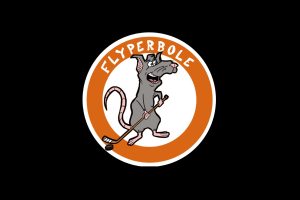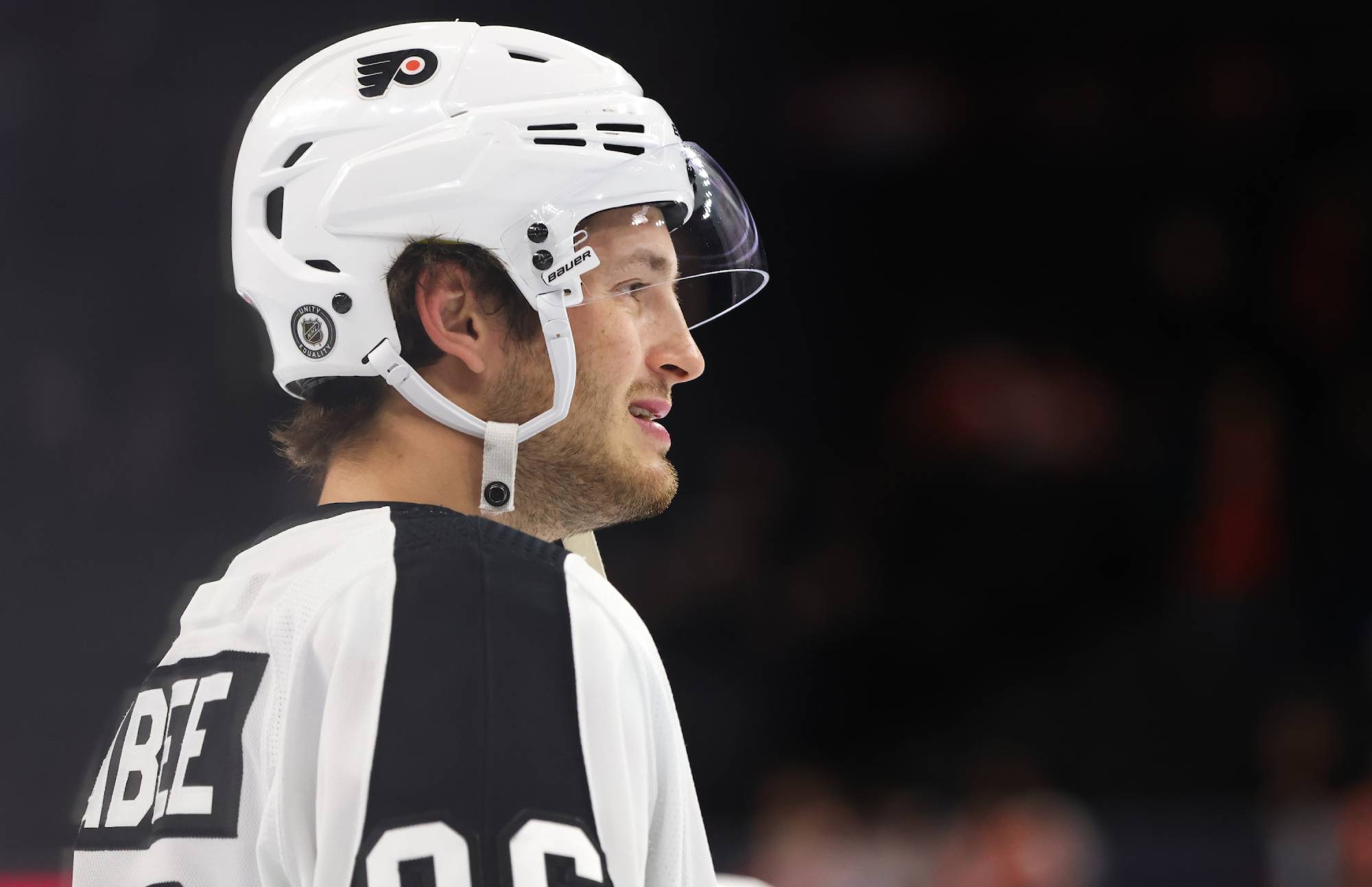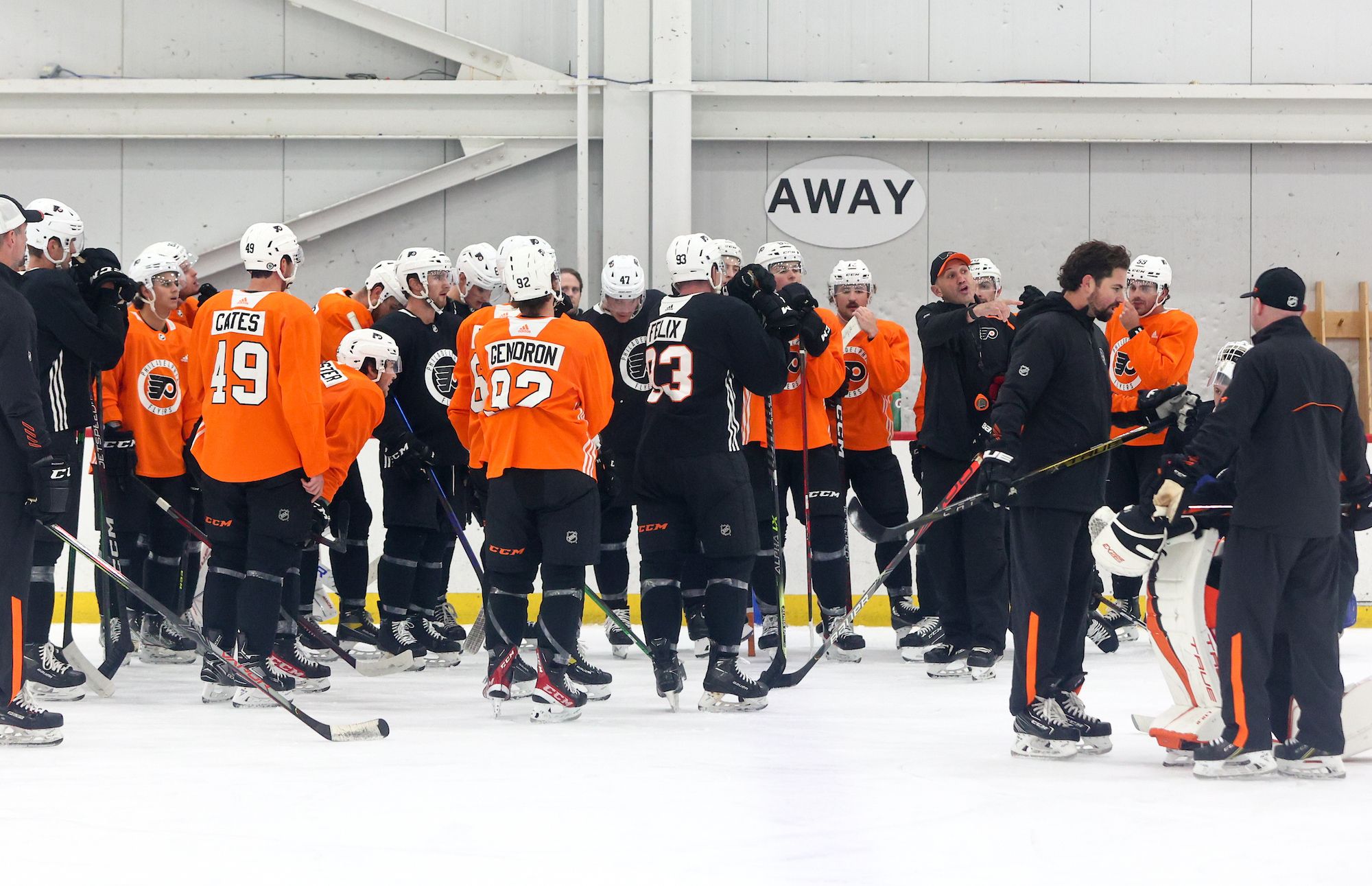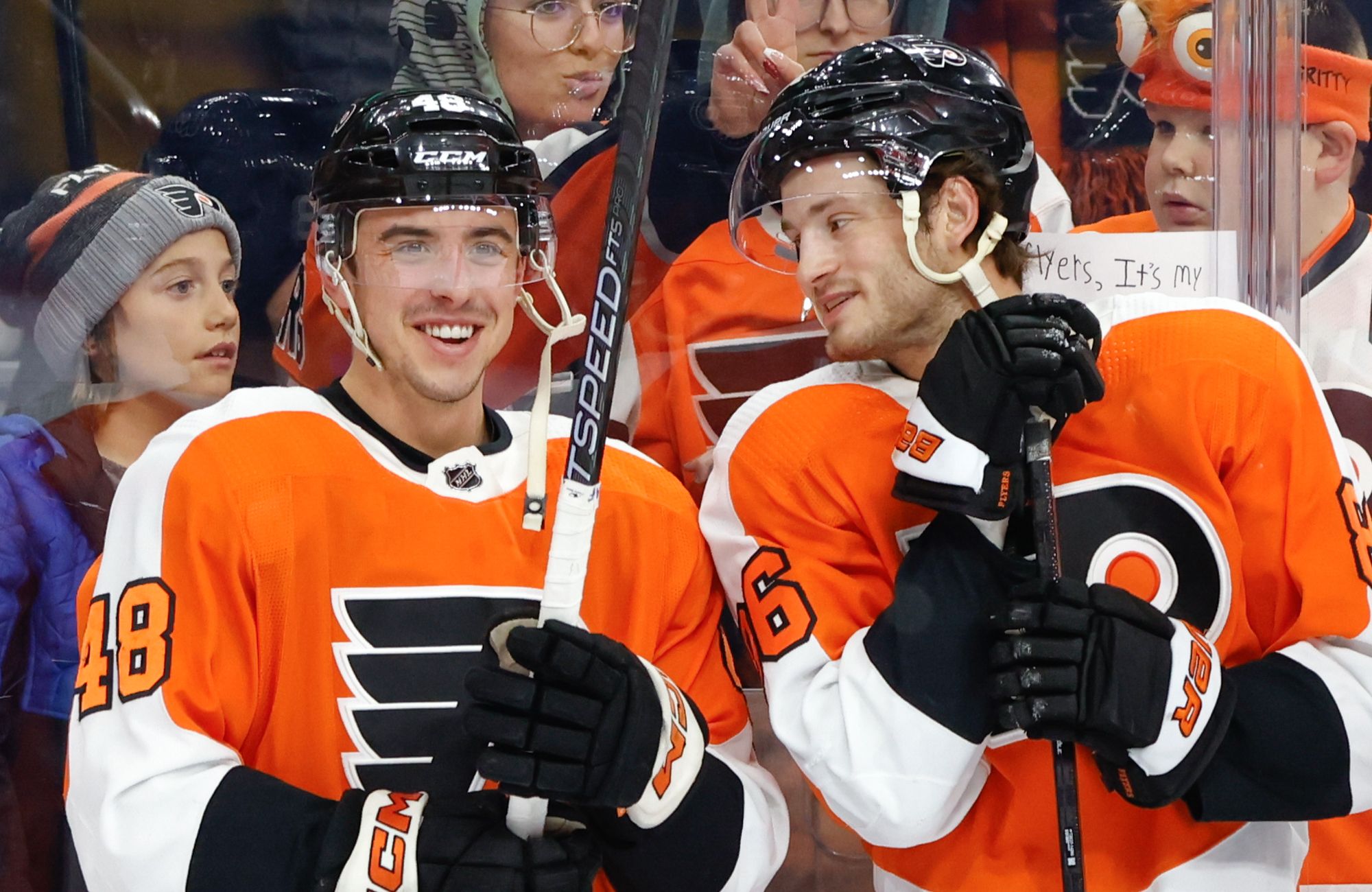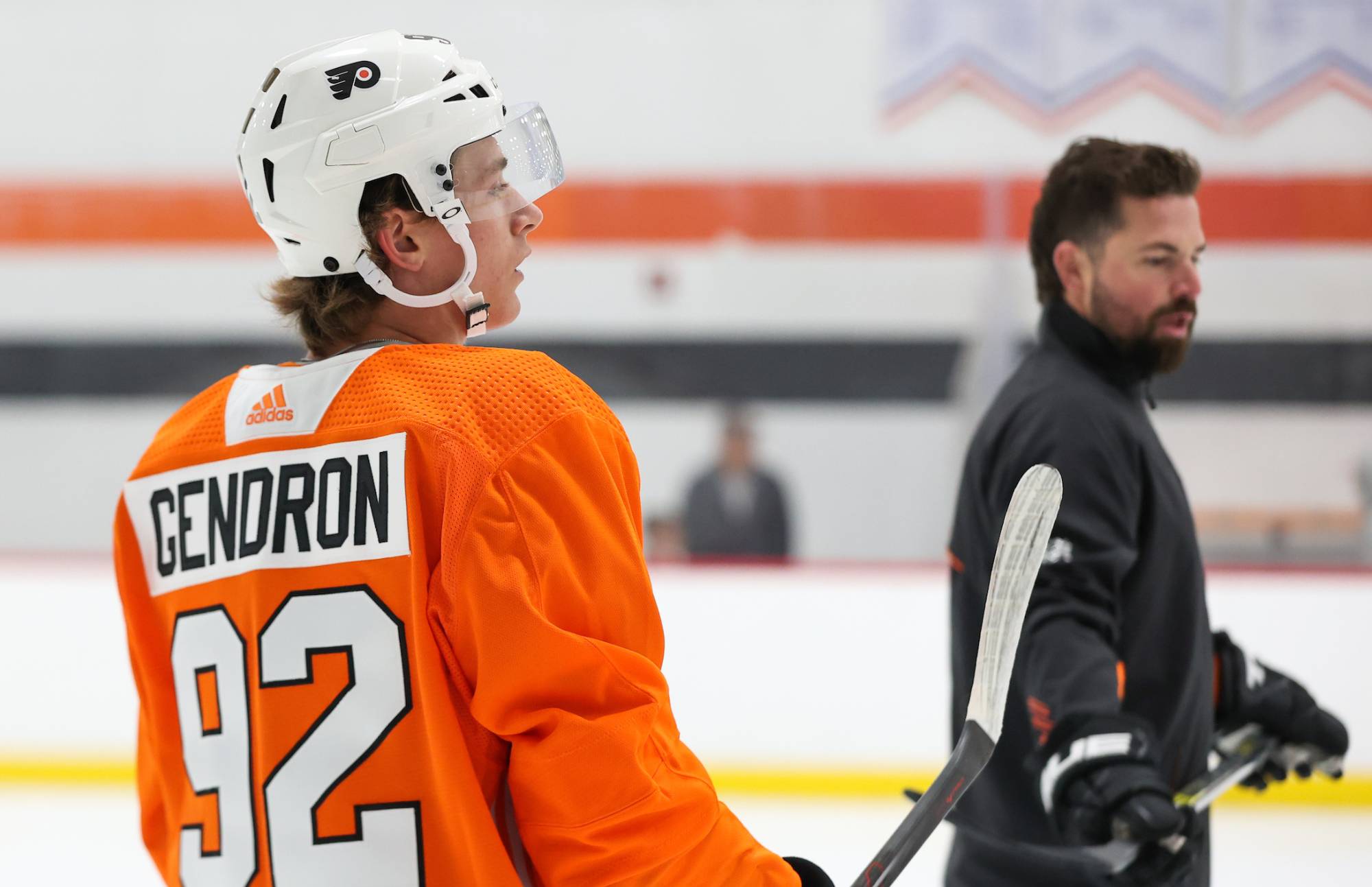It’s no secret that Vincent Lecavalier’s time with the Flyers has not gone as planned so far. He has struggled quite mightily, and was recently demoted to the fourth line where he returned to his natural center position. The good news is that in the two games since his demotion, he was played quite well.
He has had three goals and 12 shots in two games since his move back to center and down to the fourth line. He managed a 57.9% shot attempt differential against Toronto and 58.8% against the Bruins. Simply put, he’s looked pretty good playing with Adam Hall and Zac Rinaldo.
I personally like the idea of having an offensive threat on the fourth line, though Craig Berube will do what he feels is best for the team as the Flyers continue their march to the playoffs. But what happens beyond this season?
You know the story by now. The Flyers have three talented centers in Claude Giroux, Sean Couturier, and Brayden Schenn who now officially appears to be a center after bouncing around for a couple of years. Top prospect Scott Laughton is a center who is dominating the Ontario Hockey League and looks poised to make the NHL next season. Let’s also not forget that Adam Hall, Michael Raffl, and Matt Read all can/do play center as well. It’s tough to find a spot for Lecavalier, who readily admits he doesn’t feel natural at wing.
For the sake of being thorough, I thought it might be a good exercise to lay out the Flyers’ options with Lecavalier beyond this season. So let’s take a look at those options.
Keep him
The obvious option is to keep him. He’s under contract for four more years at a $4.5 million cap hit. He’s declining, 33 years old, and he has a no-movement clause. Even if he were willing to waive his no-movement clause because he’s unhappy with his role, would you even find a taker for him?
Perhaps the best bet is to hang onto him. The Flyers could continue to try find him a role in their top-six, most likely on the wing because of Giroux, Schenn, and Couturier, but we’ve had nearly 60 games this year in which that hasn’t been much of a success.
The better option may be to continue to keep him at center on the fourth line. The gut reaction to hearing “fourth line” is to think of minimal minutes; but that’s not necessarily the case. With four balanced lines, and special teams play, a fourth line can see respectable minutes.
Look no further than Lecavalier’s two games as the fourth line center, playing 13:32 and 17:02 respectively. That’s actually more than the 13:31 he averaged throughout the rest of the month of March. Remove the outlier game of 3:22 (a March 5 contest against Washington in which Lecavalier received a game misconduct in the first period) and it only jumps to 14:27. So he is barely seeing fewer minutes in his “demotion”.
It’s the same reason I don’t dislike the idea of Scott Laughton being the fourth line center next year. You can get a lot of good minutes in a fourth-line role with special teams play. We saw it with Sean Couturier in his rookie year, playing over 14 minutes a night with 2:41 on the penalty kill.
There’s no reason that Lecavalier can’t see similar, yet slightly reduced, minutes to what he has all season. He’d play a specific role as a fourth line center, power-play specialist, and a guy that can move up the lineup late in games when offense is needed; not unlike what we saw against the Bruins on Sunday.
Is it an ideal choice for a 33 year old former star with a $4.5 million cap hit? No, but it might be the best choice.
Trade him
From a Flyers’ perspective, it makes all the sense in the world to trade him. You rid yourself of a bloated contract and you help clear up your logjam at center. Unfortunately, this isn’t about making sense for the Flyers because it likely doesn’t make any sense for anyone else.
As mentioned above, even if Lecavalier was unhappy with his role and was willing to waive his no-movement clause, you might not find a taker. He’s old, expensive, and declining. He’s an injury risk and is pacing for only 37 points in 68 games this year. He has four years remaining on his contract. There’s just not a lot to be excited about there.
However, the new collective bargaining agreement allows for retained salary transactions. That is most likely the Flyers’ only hope if they decide they want to trade Lecavalier.
For the remaining term of Traded Player’s SPC, the Club from which the Player is Traded may agree to retain no more than fifty (50) percent of the Averaged Amount of such SPC’s remaining term (“Retained Salary Transaction” and the particular SPC, a “Retained Salary SPC”). In each Retained Salary Transaction, the percentage allocation of the retained Averaged Amount cannot be altered from year to year. – CBA section 50.5(e)(iii)(A)
There are additional stipulations but the key takeaway is that the Flyers can retain up to 50% of Lecavalier’s cap hit and salary in a trade. This is exactly what they did when they traded Andrej Meszaros at the trade deadline.
Now, the Flyers also can’t have more than three retained salary contracts on the books, or more than 15% of the upper limit retained at any given time. That will not be an issue though. Meszaros’ contract expires after this year so the Flyers will sit at zero on both counts come the summer.
Vincent Lecavalier for four years at a $2.25 million cap hit looks a heck of a lot more desirable than Vincent Lecavalier for four years at a $4.5 million cap hit. It’s much easier to roll the dice at that point.
The downside, of course, is that the Flyers would then have (up to) $2.25 million in dead cap space on their books for four years. Is that worth even worth it?
Buy him out
The last option (outside of more unreasonable options like strong-arming him into waivers or something) for the Flyers would be to buy him out. It accomplishes much of the same as a trade would, without receiving anything in return as compensation.
It’s important to note that this is not a compliance buy-out which the league granted in the new CBA. Even if the Flyers hadn’t already used their two compliance buy-outs — which could only be used either last summer or next — on Daniel Briere and Ilya Bryzgalov, you can only use them on contracts signed before the new CBA. So Lecavalier does not apply.
I am speaking of a traditional buyout; which the Flyers did not too long ago with Oskars Bartulis.
A buyout results in either one or two-thirds (two in Lecavalier’s case) of a player’s remaining salary being paid out over twice the remaining length. The player becomes a free agent. The team sees some cap savings but also some dead cap space (such as the $100k in dead space they have this year for Bartulis).
Were a buyout to occur this summer, Lecavalier’s costs would be as follows, thanks to Capgeek (Editor’s note: Capgeek adjusted their calculator the day after this was published, so we have since updated the article).
2014-15: $1,500,000
2015-16: $3,000,000
2016-17: $3,000,000
2017-18: $2,500,000
2018-19: $1,000,000
2019-20: $1,000,000
2020-21: $1,000,000
2021-22: $1,000,000
It’s not a terrible option, but it’s certainly not ideal either. They’d see fairly substantial cap hits for the next four seasons, and a cap hit of some kind for eight seasons.
Conclusion
It’s going to be an interesting summer for Vincent Lecavalier and the center position on the Philadelphia Flyers. Do they keep him around? Do they even have a choice? If they do, do they continue to try to fit him in the top-six or keep him as the fourth line center and power-play specialist? Will they trade him? Can they trade? Might they buy him out?
There’s a lot to consider with Lecavalier. The one thing that looks pretty clear to me is that if the Flyers want to be rid of him, they are going to be absorbing dead cap space in some shape or form. The question becomes, is it better to take a potentially larger yearly hit over four years, or a smaller yearly hit over more than that?




